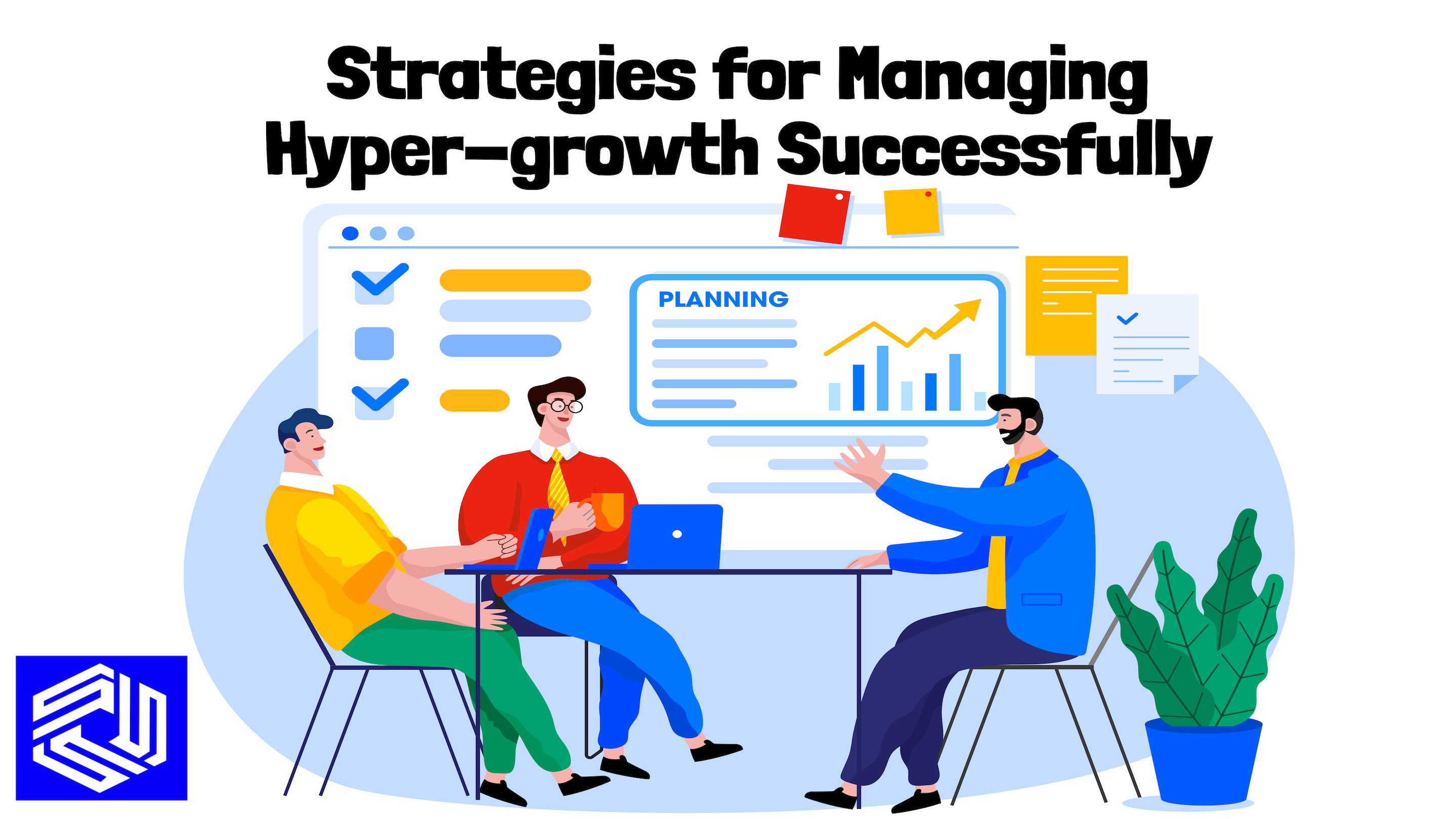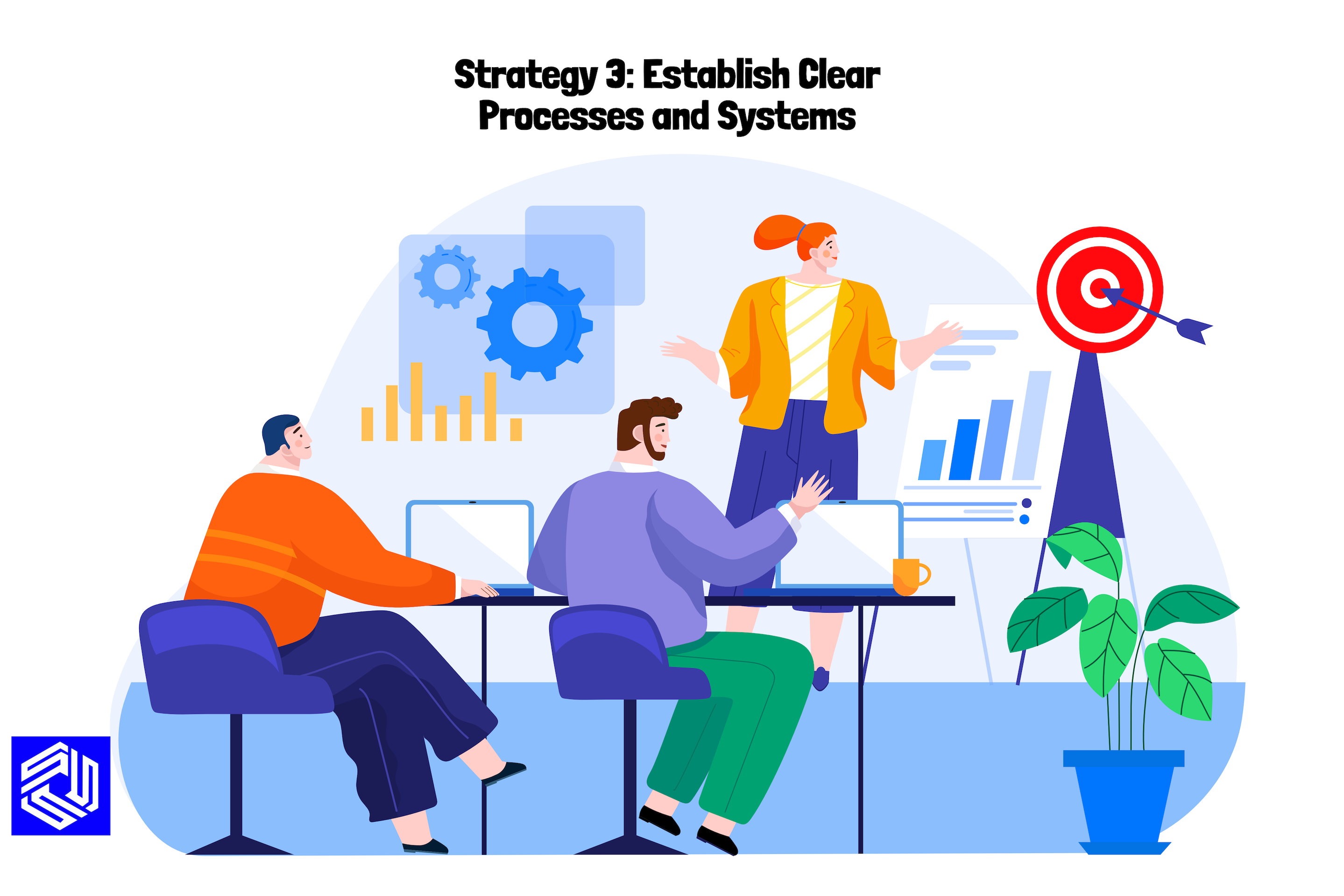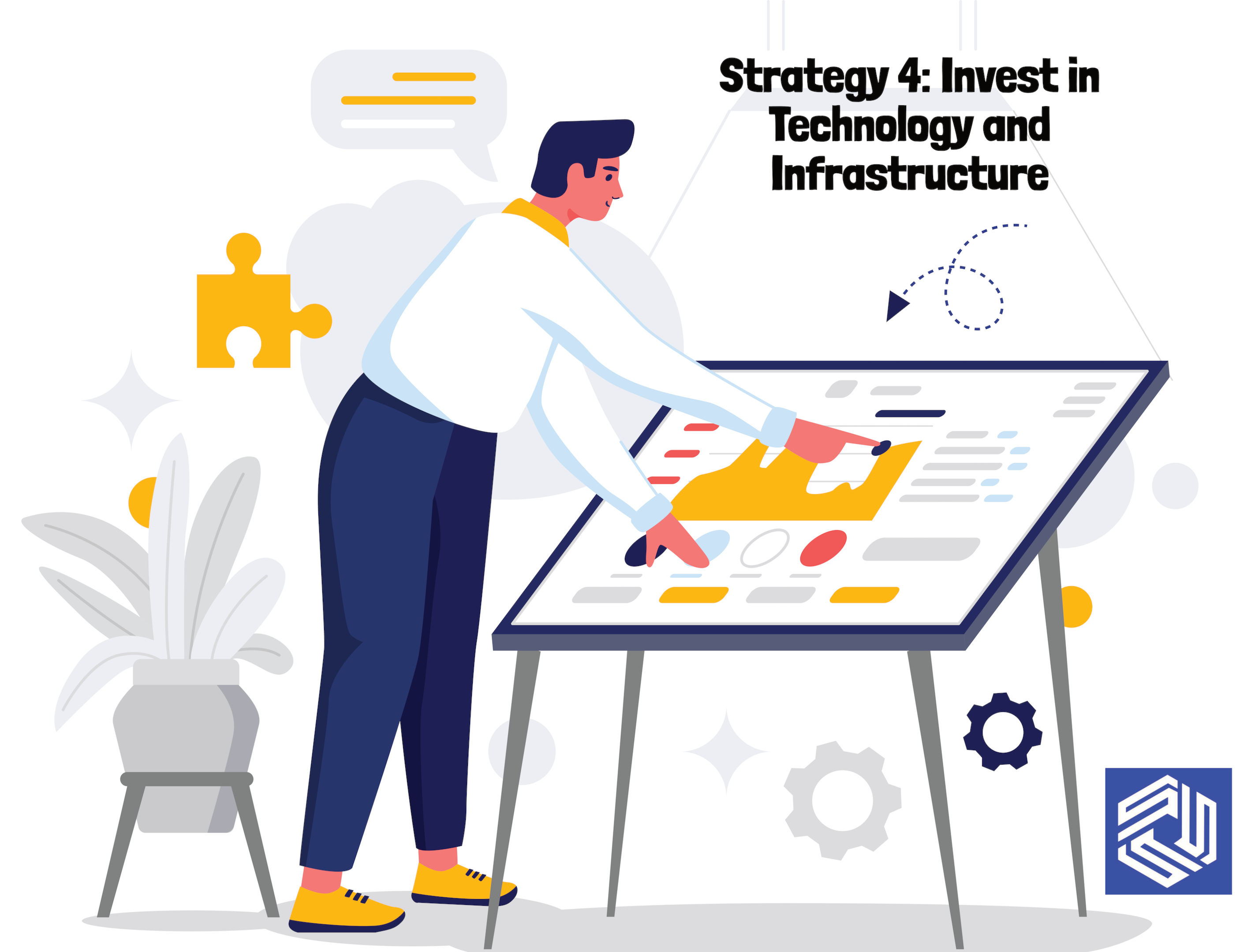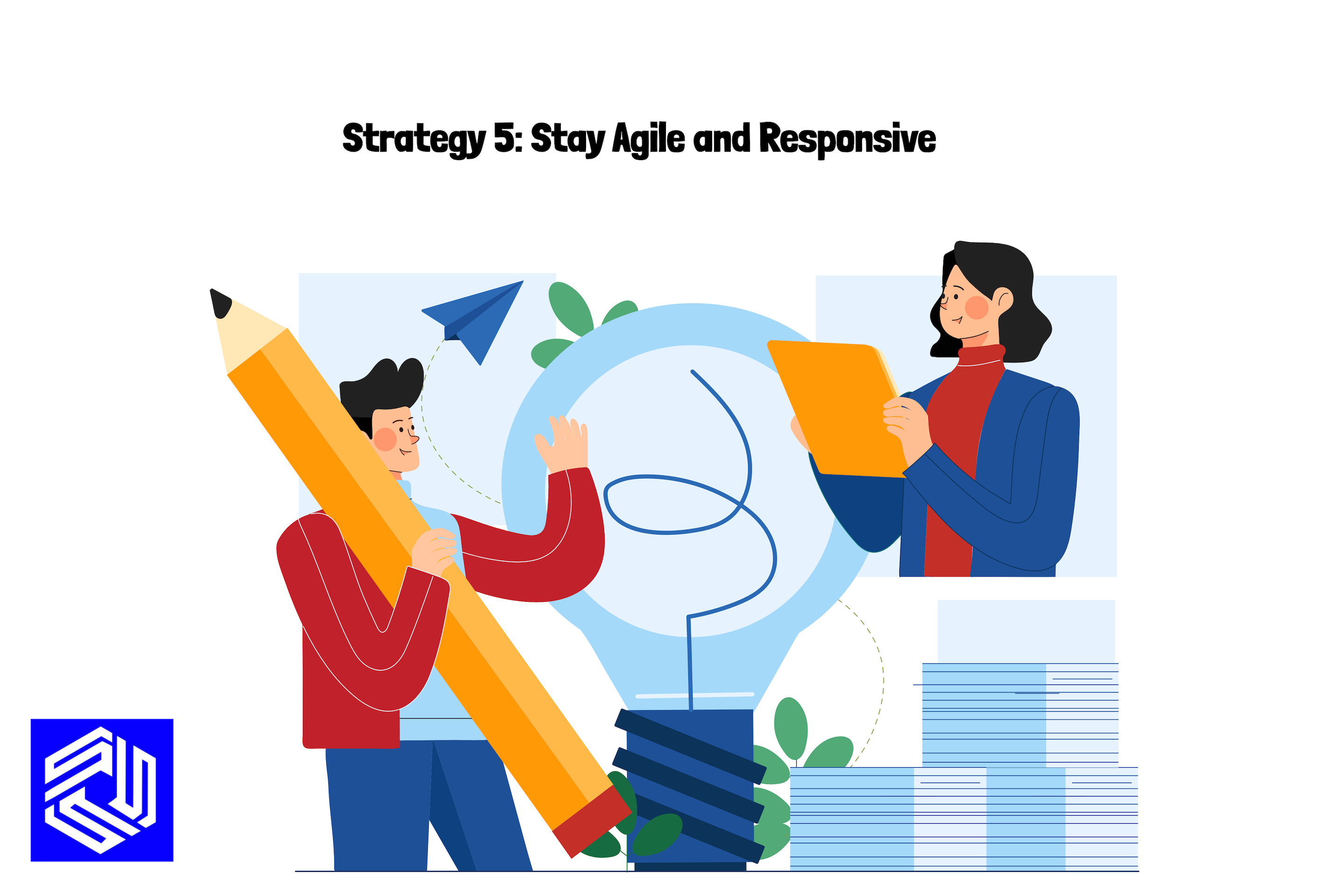5 Strategies for Managing Hyper-growth Successfully
Hypergrowth phase is an exciting time for any business. It represents a period of rapid expansion and company success, driven by increasing customer & market demand, expanding product lines, and growing revenue. However, young industries experience a unique set of challenges, such as maintaining quality, managing resources, and scaling operations effectively when exponential growth hits. To succeed in this phase, it's critical to have a solid plan in place.
In this post, we'll discuss the potential benefits and challenges of hyper growth and provide a brief overview of the 5 strategies you can use to manage hyper growth successfully.

Challenges that come with with hyper growth
Some of the most significant challenges that come with hyper growth include:
- Managing cash flow: Rapid growth can put a strain on a company's finances, particularly if the company is investing heavily in new employees, infrastructure, and other resources. This can make it challenging to manage cash flow and maintain profitability.
- Scaling operations: Hypergrowth can quickly outpace a company's ability to scale its operations, which can result in bottlenecks and other operational inefficiencies. This can lead to decreased productivity and customer acquisition.
- Maintaining company culture: As a company grows rapidly, it can be challenging to maintain the company culture that made it successful in the first place. This can lead to a loss of focus and a lack of alignment between employees, which can undermine the company's long-term success.
- Managing risk: Rapid expansion can expose a company to new huge risks and challenges, including regulatory compliance, cybersecurity threats, and supply chain disruptions. This can make it challenging to manage risk effectively and maintain the company's reputation.
Managing hyper-growth requires a careful balancing act between investing in growth and managing risk. Companies that can navigate these challenges successfully are well-positioned to achieve sustained success over the long term.
Five Strategies for Managing Hyper-growth Successfully
Strategy 1: Focus on Core Competencies

To manage hyper growth successfully, it's essential to stay focused on what your business does best. This means identifying and prioritizing your core competencies, or the unique strengths and abilities that set your business apart from competitors. By focusing on these competencies, you can leverage your expertise and build on your strengths to drive growth.
Importance of Staying Focused on Core Competencies
One of the biggest risks of hyper growth is losing focus and spreading yourself too thin. This can lead to a decline in quality, customer satisfaction, and revenue. By staying focused on your core competencies, you can avoid this risk and maintain the quality and consistency that customers expect. Additionally, focusing on core competencies can help you differentiate your business and stand out in a crowded market.
Examples of Hyper growth Companies that Have Successfully Leveraged Their Core Competencies
Many fast growing companies have successfully leveraged their core competencies towards growth strategy. For example, Amazon's core competency is its ability to deliver products quickly and efficiently. This has enabled the company to expand its product lines and dominate the e-commerce market. Another example is Uber, which leveraged its core competency of providing convenient, on-demand transportation to become a global leader in the ride-sharing industry.
Tips for Identifying and Prioritizing Core Competencies
Identifying and prioritizing your core competencies can be a challenging process, but it's essential for managing company's growth successfully. Here are some tips to help you get started:
- Conduct a SWOT analysis to identify your strengths and weaknesses, as well as opportunities and threats in your market.
- Analyze your customer feedback and sales data to identify areas where you excel and where you can improve.
- Look at your competition to identify areas where you can differentiate yourself and where you may be at a disadvantage.
- Prioritize your core competencies based on their potential impact on your business, as well as your ability to leverage them effectively.
By focusing on your core competencies and building on your strengths, you can manage hyper growth successfully and drive long-term success for your business.
Strategy 2: Build a Strong Leadership Team

To manage hyper growth successfully, you need a strong leadership team in place. This team will provide guidance, direction, and support as your business expands and evolves. Here's why a strong leadership team is essential and how to build one.
How a Strong Leadership Team Can Help Manage Hyper growth
A strong leadership team can provide many benefits during hyper growth, including:
- Ensuring that everyone is aligned with the company's vision and goals.
- Providing support and guidance to employees during times of change and uncertainty.
- Managing resources effectively and making strategic decisions to drive growth.
- Fostering a culture of innovation, collaboration, and accountability.
Key Leadership Qualities and Roles Needed for Hyper growth
To build a strong leadership team, you'll need individuals who possess key qualities and skills needed for hyper growth. Some of these include:
Visionary leadership: the ability to create and communicate a compelling vision for the company's future.
- Strategic thinking: the ability to make sound decisions based on data and market trends.
- Adaptability: the ability to pivot quickly and adjust plans as needed.
- Collaboration: the ability to work effectively with others and build strong relationships.
- People management: the ability to inspire, motivate, and develop employees.
- Tips for Building and Nurturing a Strong Leadership Team
Here are some tips to help you build and nurture a strong leadership team:
- Hire for fit: Look for individuals who share your company's values and culture, as well as possess the necessary skills and experience.
- Provide ongoing training and development: Invest in your leadership team by providing opportunities for training, coaching, and mentoring.
- Foster open communication: Encourage open communication and feedback to ensure that everyone is aligned and working towards the same goals.
- Recognize and reward success: Celebrate the successes of your leadership team and provide incentives for achieving key milestones.
By building a strong leadership team, you can manage hyper growth successfully and set your business up for long-term success.
Strategy 3: Establish Clear Processes and Systems

As your business grows, it's essential to establish clear processes and systems to ensure that operations run smoothly and efficiently. By doing so, you can minimise errors, reduce costs such as customer acquisition costs, and improve the customer experience. Here's why clear processes and systems are essential and how to establish them.
How Clear Processes and Systems Can Help Manage Hyper growth
Clear processes and systems can provide many benefits during hyper growth, including:
- Consistency: Ensuring that everyone follows the same procedures and processes, which improves quality and reduces errors.
- Efficiency: Streamlining operations and reducing waste, which can lead to cost savings and improved profitability.
- Scalability: Creating processes and systems that can be easily replicated and scaled as the business grows.
- Compliance: Ensuring that the business is compliant with regulations and standards.
Key Processes and Systems to Consider
When establishing clear processes and systems, there are several key areas to consider, including:
- Sales: Creating a standardised sales process that includes lead generation, qualification, and closing deals.
- Operations: Establishing processes for managing inventory, production, and shipping.
- HR: Creating standardised processes for recruiting, hiring, and onboarding employees.
- Finance: Establishing processes for managing cash flow, financial reporting, and budgeting.
Tips for Designing and Implementing Effective Processes and Systems
Here are some tips to help you design and implement effective processes and systems:
- Identify key processes: Identify the most critical processes that need to be standardised, streamlined, or improved.
- Involve stakeholders: Involve employees and stakeholders in the process to ensure that everyone is aligned and invested in the changes.
- Test and iterate: Test and refine the processes to ensure that they are effective and efficient.
- Communicate clearly: Communicate the changes to employees and provide training to ensure that everyone understands and follows the new processes.
By establishing clear processes and systems, you can manage hypergrowth successfully and set your business up for long-term success.
Strategy 4: Invest in Technology and Infrastructure

As hypergrowth companies, investing in technology and infrastructure becomes essential to support hyper growth. Emerging technologies and infrastructure can help improve efficiency, scalability, and customer experience. Here's why technology and infrastructure are essential and how to invest in them.
How Technology and Infrastructure Can Support Hyper growth
Technology and infrastructure can provide many benefits during hypergrowth, including:
- Efficiency: Automating tasks and processes, reducing errors, and improving productivity.
- Scalability: Enabling the business to grow and expand without significant investments in physical infrastructure or personnel.
- Customer experience: Enhancing the customer experience through improved access, responsiveness, and personalization.
Key Technology and Infrastructure Investments to Consider
When investing in technology and infrastructure, there are several key areas to consider, including:
- Cloud computing: Cloud-based services such as Skhokho provide scalability, security, and cost savings for storage, software, and infrastructure.
- E-commerce platforms: E-commerce platforms enable businesses to sell products and services online and provide features such as payment processing, order fulfillment, and customer support.
- CRM and marketing automation: Customer Relationship Management (CRM) and marketing automation platforms enable businesses to manage customer relationships, automate marketing tasks, and track customer behavior.
- Analytics and business intelligence: Analytics and business intelligence tools provide insights into customer behavior, operations, and performance metrics, enabling data-driven decision-making.
Tips for Selecting and Implementing the Right Technology and Infrastructure
Here are some tips to help you select and implement the right technology and infrastructure:
- Define your requirements: Identify your specific needs and requirements, including scalability, security, features, and integration with existing systems.
- Evaluate options: Research and evaluate different options, including cost, ease of use, and customer support.
- Plan for integration: Ensure that the new technology and infrastructure integrate with your existing systems, and plan for data migration and user training.
- Monitor and optimize: Monitor performance metrics and optimize the technology and infrastructure to ensure that they are meeting your needs and expectations.
By investing in technology and infrastructure, you can manage hypergrowth successfully and support long-term growth and scalability for your business.
Strategy 5: Stay Agile and Responsive

To manage hypergrowth successfully, it's important to stay agile and responsive to the changing needs of your business and customers. Here's why agility and responsiveness are essential and how to foster a culture of agility.
Why Agility and Responsiveness Are Essential: Growth Curve
During hypergrowth, your business will face new challenges and opportunities. Staying agile and responsive will help you adapt quickly to these changes, making it easier to seize opportunities and mitigate risks.
Key Agile Practices to Consider
To stay agile and responsive during hypergrowth, consider the following agile practices:
- Rapid prototyping: Create prototypes quickly to test new innovative ideas and get feedback from customers.
- Iterative development: Break down projects into smaller, manageable pieces and iterate on them to improve continuously. This works well with project management.
- Cross-functional teams: Create teams that include members with different skills and expertise to collaborate more effectively.
- Continuous improvement: Regularly review and improve processes to ensure that they remain effective and efficient.
Tips for Fostering a Culture of Agility and Responsiveness
Here are some tips to help you foster a culture of agility and responsiveness:
- Lead by example: As a leader, model the behaviors that you want to see in your employees, such as taking calculated risks and embracing change.
- Encourage experimentation: Create a safe environment where employees feel comfortable experimenting with new ideas and taking risks.
- Celebrate success: Recognize and celebrate successes, no matter how small, to encourage a culture of innovation and continuous improvement.
- Emphasize communication: Encourage open communication and collaboration across teams to ensure that everyone is on the same page and can respond quickly to changes.
By staying agile and responsive, you can manage hypergrowth successfully and position your business for continued success in the long term.
Conclusion
Hypergrowth can be a double-edged sword. While it presents exciting opportunities for expansion and success, it can also bring a host of new challenges that can derail even the most promising business. To manage hypergrowth successfully, it's essential to focus on your core competencies, build a strong leadership team, establish clear processes and systems, invest in technology and infrastructure, and stay agile and responsive.
By following these five strategies, you can position your business for continued success during periods of rapid growth. Whether you're a startup looking to scale or an established company seeking to expand into new markets, these strategies will help you navigate the challenges of hypergrowth and seize the opportunities that come with it.
So, take action today. Identify which of these strategies are most relevant to your business and start implementing them. You may need to adapt and modify them to fit your unique circumstances, but by doing so, you'll be taking an important step towards managing hypergrowth successfully and ensuring the long-term success of your business.
Remember, hypergrowth is just one part of the business journey. By managing it successfully, you'll be better positioned to build a sustainable, thriving business that can withstand the ups and downs of the market and continue to grow and succeed over the long term.









